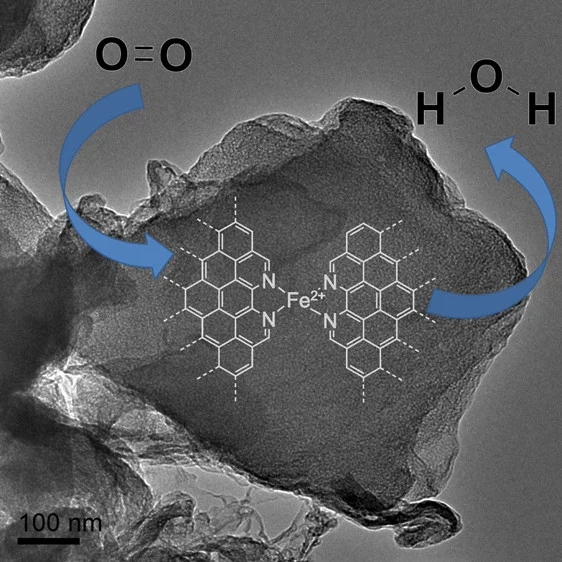The cost reductions required for the large-scale commercialization of polymer electrolyte fuel cells (PEFCs) could be achieved by substituting state-of-the-art PEFC cathode catalysts based on platinum with more abundant and affordable materials. In this context, this work presents a new approach for synthesizing Fe-based oxygen reduction reaction (ORR) catalysts using sodium carbonate (Na2CO3) as an inexpensive but effective pore-inducing agent offering microporosity control. By employing (scanning) transmission electron microscopy, a qualitative relation between the heat-treatment temperature and the formation of larger isolated Fe-based phases in particulate form was identified, mainly unveiling an effect of this variable on the Fe-speciation. Complementary bulk characterization, namely, X-ray absorption spectroscopy, on the other hand confirmed that the majority of the iron in the samples was present in single atomic sites. Electrochemical activity measurements in liquid environment as well as in a fuel cell demonstrate that the resulting materials display ORR-activities among the highest for this class of catalysts and synthesis conditions.
Contact
Dr Maarten Nachtegaal
SuperXAS beamline
Operando spectroscopy group & Laboratory for Synchrotron Radiation and Femtochemistry (LSF)
Swiss Light Source, Paul Scherrer Intitute
5232 Villigen-PSI, Switzerland
Telephone: +41 56 310 30 56
E-mail: maarten.nachtegaal@psi.ch
Original Publication
Fe-Based O2-Reduction Catalysts Synthesized Using Na2CO3 as a Pore-Inducing Agent.
Kathrin Ebner, Juan Herranz, Viktoriia A. Saveleva, Bae-Jung Kim, Sebastian Henning,
Marlène Demicheli, Frank Krumeich, Maarten Nachtegaal, and Thomas J. Schmidt
ACS Applied Energy Matererials, 14 January 2019
DOI: 10.1021/acsaem.8b02036

